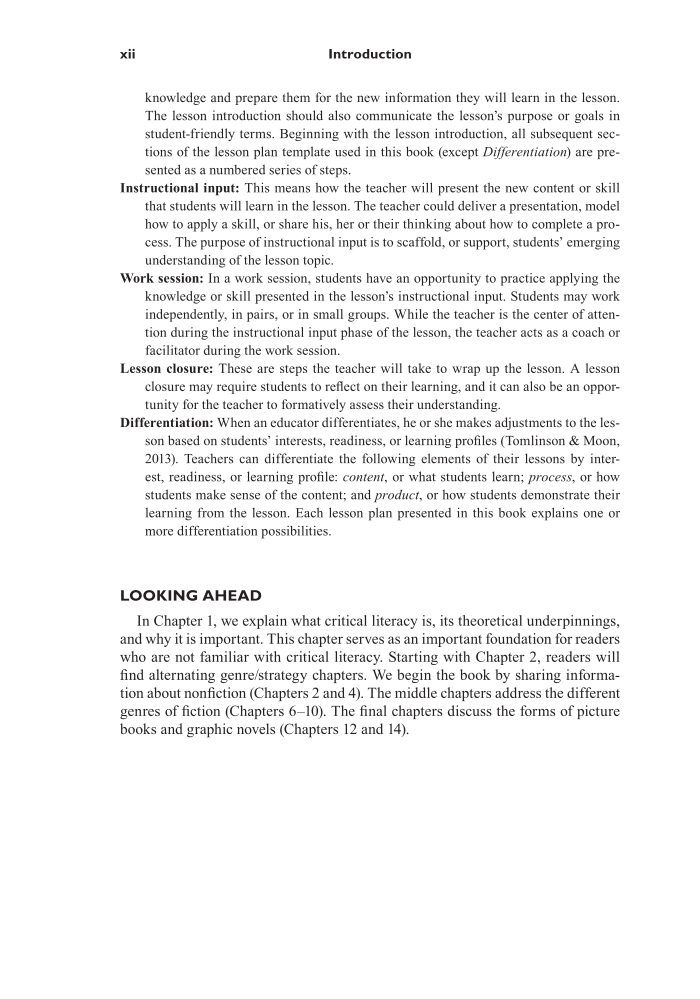xii Introduction knowledge and prepare them for the new information they will learn in the lesson. The lesson introduction should also communicate the lesson’s purpose or goals in student-friendly terms. Beginning with the lesson introduction, all subsequent sec- tions of the lesson plan template used in this book (except Differentiation) are pre- sented as a numbered series of steps. Instructional input: This means how the teacher will present the new content or skill that students will learn in the lesson. The teacher could deliver a presentation, model how to apply a skill, or share his, her or their thinking about how to complete a pro- cess. The purpose of instructional input is to scaffold, or support, students’ emerging understanding of the lesson topic. Work session: In a work session, students have an opportunity to practice applying the knowledge or skill presented in the lesson’s instructional input. Students may work independently, in pairs, or in small groups. While the teacher is the center of atten- tion during the instructional input phase of the lesson, the teacher acts as a coach or facilitator during the work session. Lesson closure: These are steps the teacher will take to wrap up the lesson. A lesson closure may require students to reflect on their learning, and it can also be an oppor- tunity for the teacher to formatively assess their understanding. Differentiation: When an educator differentiates, he or she makes adjustments to the les- son based on students’ interests, readiness, or learning profiles (Tomlinson & Moon, 2013). Teachers can differentiate the following elements of their lessons by inter- est, readiness, or learning profile: content, or what students learn process, or how students make sense of the content and product, or how students demonstrate their learning from the lesson. Each lesson plan presented in this book explains one or more differentiation possibilities. LOOKING AHEAD In Chapter 1, we explain what critical literacy is, its theoretical underpinnings, and why it is important. This chapter serves as an important foundation for readers who are not familiar with critical literacy. Starting with Chapter 2, readers will find alternating genre/strategy chapters. We begin the book by sharing informa- tion about nonfiction (Chapters 2 and 4). The middle chapters address the different genres of fiction (Chapters 6–10). The final chapters discuss the forms of picture books and graphic novels (Chapters 12 and 14).
Document Details My Account Print multiple pages
Print
You have printed 0 times in the last 24 hours.
Your print count will reset on at .
You may print 0 more time(s) before then.
You may print a maximum of 0 pages at a time.




































































































































































